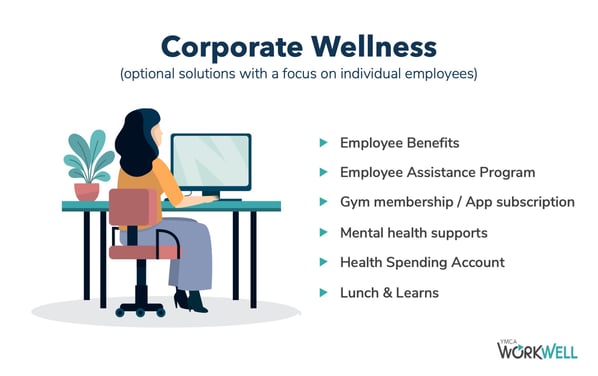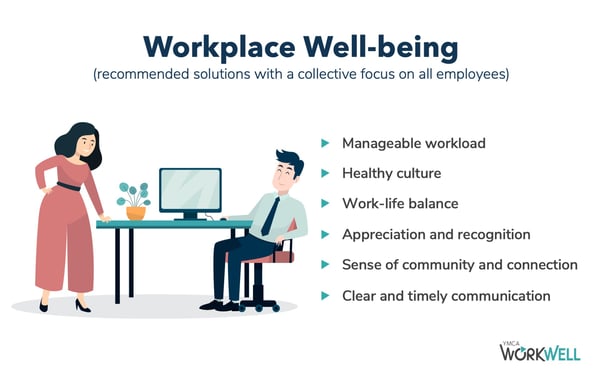Let’s start with a simple question: Do your people feel cared for — or just checked on?
In today’s workplace, we’ve seen a surge in mental health initiatives, fitness challenges, wellness apps, and meditation subscriptions. And while those efforts are well-intentioned, they might not be getting to the heart of what your employees really need.
Because here’s the thing: wellness and well-being aren’t the same — and conflating them might be costing you trust, engagement, and ultimately, retention.
A Wake-Up Call From The "Great Resignation"
During the pandemic, everything changed, seemingly overnight. It led to one of the biggest disruptions I have seen in my 25-year career. Employees didn’t just want to return to the old normal — they wanted better.
According to surveys, nearly half of workers considered leaving their jobs or changing careers within a six-month window. They weren’t just tired — they were re-evaluating everything. Employees starting demanding that their employers care about their well-being. There were growing calls to belong, to create balance, and to be seen as human.
And this led to organizations placing a greater emphasis on how their employees were doing - with more open and widespread conversations about mental health. Employees were crying out for well-being.
"But We’re Already Supporting Well-Being"
To this day, this is something we hear often. Many companies think they're tackling well-being because they offer:
- EAPs and health benefits
- Wellness Wednesdays or yoga breaks
- Gym subsidies or mindfulness apps
These are great tools — and they do matter. But they fall under the umbrella of wellness: tools that place the responsibility on the individual to stay healthy.

Redefining Employee Well-Being
At YMCA WorkWell, we define well-being more broadly — and more boldly. It’s not just about what the individual does, but what the organization enables.
Wellness says: “Here’s a resource for your health. Now you use it.”
Well-being asks: “What’s causing you stress and how can we address it?”
That means asking hard questions like:
- Are our workloads manageable?
- Do our policies support flexibility?
- Do our people feel psychologically safe?
- Are we building a culture that sees people — not just productivity?
While well-being encompasses your wellness program, it is not limited to it. Well-being demands that we look upstream at systemic issues, not just downstream at symptoms.

Burnout Is A "We" Problem
Your employees are exhausted. Many are on the verge of burnout, or are already there, and no amount of meditation apps or free lunches will fix the root causes:
- Unsustainable workloads
- Micromanagement and lack of autonomy
- Inadequate recognition or pay
- Always-on expectations
- Isolation and loneliness
We’ve seen leaders install monitoring software to track employee keystrokes. But here’s a wild idea: if you trust someone enough to pay them a full-time salary, trust them to get their work done — wherever, whenever, and however it works best.
That’s leadership rooted in trust, not control.
What Purpose-Driven Leaders Can Do
If you want to support well-being, start here:
1. Check In Like You Mean It
We have surveyed tens of thousands of employees with our Employee Insights Surveys and they often cite a need for more mental health supports, and one thing I have learned through my career is that those who are willing to ask are rarely the only ones who need it most.
A very simple way to start is by holding individual well-being check-ins with every single one of your employees. Not performance reviews. Not project updates. Just human conversations about how people are doing — and what might help.
2. Make Sure Your Employees Know That They’re valued
Feeling valued is about having a sense of belonging and that you bring something special and unique to the table. That you can bring your authentic self to work each day. That you both fit in and stand out.
Take time to let each employee know that they are appreciated – in the way that matters most to them. You’ll need to talk to them to figure out what that way is. And, remember, appreciation is about who an employee is, not just what they do.
Flexible policies, thoughtful gestures, and inclusive culture all signal that employees matter — not just as workers, but as people.
3. Get Real About Workload
Back-to-back meetings, inbox overload, and unclear expectations are crushing. We all know these challenges, and that's why an unmanageable workload is regularly one of the top workplace stressors we see in our Insights data.
So, what can we do for ourselves and our teams? Help your team prioritize, say no to non-essential tasks, and build a culture where people can leave work — and actually rest.
The Bottom Line
Wellness helps.
Well-being transforms.
Burnout is real. Burnout is here. But, this doesn’t mean we have to simply accept it. This isn’t about offering more perks. It’s about building better workplaces — where people can do great work and live full lives.
If you’re ready to move from surface-level wellness to meaningful change, we’d love to support your journey. It starts with one step — and we’re here to walk it with you.